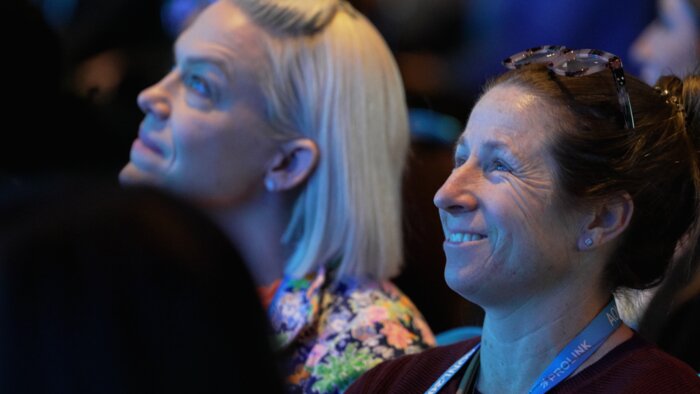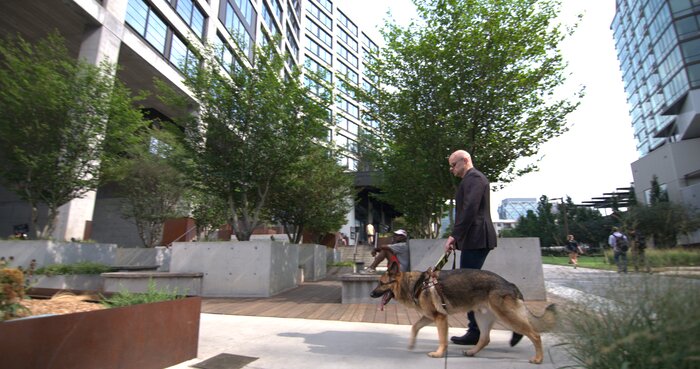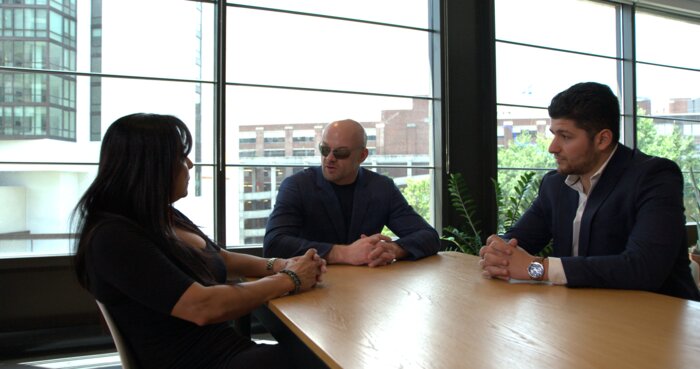Hybrid work environments are the cornerstone of the future of work, blending the flexibility of remote work with the collaboration of in-office time. While it sounds like the best of both worlds, it also brings unique challenges: building rapport remotely, staying plugged in and motivated, and creating meaningful connections when there’s no water cooler talk or hallway conversations to fill the gaps.
As someone who has navigated connections in unconventional ways, I can tell you that resilience isn’t just about adapting—it’s about thriving in a space where challenges become opportunities. Let’s talk about how you can overcome the hurdles of hybrid work by building psychological safety, fostering connections, and staying motivated.
Why Connection is Tougher in the Future of Work
In a traditional office, relationships grow organically. You bump into someone in the hallway, share a laugh before a meeting, or debrief over coffee afterward. Remote and hybrid work environments don’t come with those built-in touchpoints. Without them, it’s easy for:
- Team Cohesion to Suffer: People feel isolated and disconnected from the broader mission.
- Communication Gaps to Widen: Misunderstandings grow without the nuance of face-to-face interactions.
- Motivation to Decline: Without visible signs of progress or camaraderie, staying engaged is a challenge.
- Trust Levels to Drop: it’s those smaller, micro-interactions that build relationships, and thus, trust, over time. And where are teams without strong trust, communication, motivation, and camaraderie?
This is where resilience comes in. It’s about finding new ways to create connections, even when the old ways are slipping out of reach.

Psychological Safety: The Foundation of High-Performing Teams
Google’s groundbreaking study on team performance found that psychological safety is the single most important factor in high-performing teams. In fact, teams with high levels of psychological safety were 27% more likely to deliver high performance. Why? Because when people feel safe to speak up, take risks, and show vulnerability, they’re more likely to collaborate, experiment, and innovate.
In a future of work filled with hybrid work environments, fostering psychological safety takes deliberate effort. It’s about creating a culture where:
- People Feel Comfortable Sharing Ideas: Without fear of judgment or criticism. This requires making people feel seen, heard, and understood—meeting them where they are, not where we assume they should be.
- Feedback is Welcomed: As a tool for growth, not criticism. Everyone has to be comfortable with the uncomfortable, and embrace the beginner’s mind absent of ego and pride.
- Every Voice is Heard: Regardless of location or work arrangement, leaders must welcome and include contributions from all members of the organization.
By embedding psychological safety into your team’s DNA, you lay the groundwork for resilience and performance to flourish in the future of work.
Building Resilience for the Future of Work with Blind Ambition™
1. Choose Your Response
Hybrid work comes with its frustrations—missed messages, tech hiccups, and a lack of face-to-face time. Resilience starts with intentionally choosing how you respond to these challenges.
Action Steps:
- When communication breaks down, focus on solutions instead of assigning blame.
- Reframe frustrations as opportunities to streamline and improve.
- Identify where you have, and can exercise the power of choice.
2. Tell Yourself the Right Stories
It’s easy to feel disconnected in a hybrid setup, but the story you tell yourself matters. Are you telling yourself that remote work isolates you, or are you seeing it as a chance to connect more intentionally?
Action Steps:
- Remind yourself of the flexibility and autonomy hybrid work offers.
- Share stories that highlight successes in creating a virtual connection, like a productive one-on-one or a virtual coffee chat.
- Write down alternative positive stories that reframe struggles into springboards for growth.
3. Visualize Your Greatness
Connection and motivation start with a clear vision. What does success in hybrid work look like for you and your team?
Action Steps:
- Picture your ideal workday—a day where communication flows, meetings are productive, and you feel deeply connected.
- Encourage your team to visualize how they contribute to the bigger picture.
- Identify the next few small actions that need to occur in order to realize the reimagined vision.

4. Get Comfortable with Discomfort
Hybrid work isn’t seamless. It’s full of awkward silences, misaligned schedules, and technical glitches. Resilience means embracing the mess and pushing forward anyway.
Action Steps:
- Accept that not every interaction will be perfect, and that’s okay.
- Push yourself to initiate connections, even when it feels awkward.
- View setbacks as learning opportunities and not full-stop failures.
5. Take Advantage of Disadvantages
What if hybrid work’s challenges were actually its strengths? The lack of water cooler talk forces you to be intentional. The flexible schedules let you focus on deep work. Resilience means flipping the script.
Action Steps:
- Schedule regular touchpoints to replace informal office interactions.
- Use remote work tools like Slack or Zoom to create new connection rituals.
- Use the time saved by avoiding your regular commute to strengthen relationships at work, create spaciousness for self-care, or optimize your time through more productively getting your work done.
Strategies for Fostering Connection and Motivation
1. Create Virtual Water Coolers
You can’t bump into someone online, but you can create spaces for informal connection.
Action Steps:
- Host virtual coffee breaks or team trivia sessions.
- Use tools like Slack to create channels for non-work-related chats.
2. Make Meetings Meaningful
Meetings are often the only touchpoint in hybrid work. Make them count.
Action Steps:
- Start meetings with check-ins or icebreakers to build rapport.
- Moderate the meeting to ensure everyone has a chance to contribute, whether they’re remote or in-person.

3. Celebrate Wins—Big and Small
Motivation thrives on public recognition. Celebrate progress, even if it’s incremental. Remember, recognizing employees is the easiest and most cost-effective incentive you can create.
Action Steps:
- Shout out achievements in team meetings or emails.
- Recognize effort, not just results, to encourage risk-taking.
- Highlight lessons learned from ideas or projects that didn’t create the desired result.
4. Use Data to Drive Connection
Metrics can reveal where connection gaps exist and how to bridge them.
Action Steps:
- Analyze engagement levels using pulse surveys.
- Use data to identify team members who may need additional support.
5. Leverage Asynchronous Collaboration
Asynchronous tools like shared documents and task boards can maintain momentum without requiring everyone to work simultaneously.
Action Steps:
- Utilize platforms like Trello or Notion to track team projects.
- Encourage team members to contribute at times that suit their schedules.
Real-World Applications of Resilience in the Future of Work
Scenario 1: Building Psychological Safety Remotely
A team struggled with virtual communication until the leader implemented weekly “open forums” for candid discussions. Within three months, trust levels improved, and collaboration increased by 40%.
Scenario 2: Staying Motivated Without Office Energy
A remote sales team introduced daily standups to share goals and wins. The practice kept motivation high and improved performance metrics by 25%.

Scenario 3: Strengthening Team Cohesion in Hybrid Settings
A hybrid marketing team scheduled monthly in-person brainstorming sessions complemented by weekly virtual check-ins. The combination enhanced creativity and reinforced team bonds.
Scenario 4: Enhancing Onboarding Processes
A hybrid company revamped its onboarding process by creating a virtual buddy system and hosting live Q&A sessions. This approach improved new hire engagement and reduced turnover by 30%.
Measuring the Impact of Resilience in Hybrid Work
Resilience delivers measurable outcomes in hybrid environments. Metrics to monitor include:
- Engagement Scores: Higher engagement often signals stronger team connection.
- Productivity Metrics: Resilient teams maintain or improve output despite challenges.
- Retention Rates: A connected and motivated team is more likely to stay with the company.
Action Steps:
- Use quarterly surveys to track team satisfaction and engagement.
- Celebrate milestones that reflect resilience, such as successful project completions.
Hybrid work isn’t just a logistical shift; it’s a mindset shift and a critical part of the future of work. By fostering psychological safety, choosing intentional connections, and embracing discomfort, you can create a hybrid work culture where people feel valued, motivated, and deeply connected—no water cooler required. Google’s research proves that psychological safety is the bedrock of high-performing teams. By embedding this principle into your approach to hybrid work, you set the stage for resilience and long-term success.!
